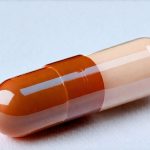Cystitis, commonly known as a urinary tract infection (UTI), is an incredibly common ailment, particularly among women. It can range from mildly irritating – causing frequent urination and discomfort – to severely debilitating with pain, fever, and even kidney involvement if left untreated. While antibiotics are the typical go-to treatment, recurrence rates are high, leaving many seeking preventative strategies. This often leads individuals to explore alternative or complementary approaches, including hormonal interventions. The idea that estrogen, a hormone typically associated with female reproductive health, might play a role in UTI prevention is gaining traction due to emerging research and a growing understanding of the complex interplay between hormones, the vaginal microbiome, and urinary tract susceptibility.
The potential link between estrogen deficiency and increased risk of cystitis stems from its influence on the vaginal environment. Estrogen helps maintain a healthy population of Lactobacilli bacteria, which are crucial for producing lactic acid—creating an acidic pH that inhibits the growth of harmful pathogens like E. coli, the most common cause of UTIs. As estrogen levels decline – naturally with menopause, after childbirth, or during breastfeeding – this protective barrier weakens, making the urinary tract more vulnerable to infection. Therefore, restoring estrogen locally in the vagina has become a focus for preventative strategies, and vaginal estrogen therapy is being explored as a potential solution. This approach differs significantly from systemic hormone replacement therapy (HRT) due to its low absorption into the bloodstream and therefore reduced risk of associated side effects.
Understanding the Vaginal Microbiome & Cystitis Prevention
The vaginal microbiome isn’t just a collection of bacteria; it’s an intricate ecosystem. Lactobacilli are considered keystone species, meaning they play a disproportionately large role in maintaining the overall health and stability of the environment. They achieve this through several mechanisms: – Production of lactic acid – lowering pH and creating an inhospitable environment for pathogens. – Competition with harmful bacteria – occupying binding sites and consuming nutrients. – Production of bacteriocins – antimicrobial substances that specifically target other bacteria. When estrogen levels are low, the number of Lactobacilli decreases, leading to a less acidic pH and allowing opportunistic pathogens to flourish. This disruption, known as dysbiosis, is strongly linked with an increased risk of cystitis.
Vaginal estrogen therapy aims to restore this balance by increasing local estrogen concentrations, thereby promoting the growth of Lactobacilli. It’s important to note that vaginal estrogen doesn’t directly fight off existing infections; it works preventatively by strengthening the natural defenses against infection. Studies have shown that women using vaginal estrogen have significantly lower rates of recurrent UTIs compared to those who don’t, and in some cases, are able to reduce or even eliminate their reliance on prophylactic antibiotics. However, it isn’t a one-size-fits-all solution and should be discussed with a healthcare professional to determine suitability and the appropriate dosage form. Considering overall wellness is important too; perhaps exploring if can stress management help prevent cystitis could complement this approach.
Types of Vaginal Estrogen & Administration Methods
There are several different formulations of vaginal estrogen available, each with its own advantages and disadvantages. – Vaginal creams: These provide a relatively high dose of estrogen and are often used initially to rebuild the vaginal microbiome. They require frequent application but offer quick absorption. – Vaginal rings (e.g., Estring): These release a low, continuous dose of estrogen over several months, providing long-term maintenance. They’re convenient and minimize systemic absorption. – Vaginal tablets/pessaries: Similar to rings, these provide sustained release but are typically used for shorter periods. – Vaginal capsules: A newer option, offering localized delivery with potentially improved adherence.
The method of administration chosen will depend on individual needs and preferences. Generally, treatment starts with a higher dose (e.g., vaginal cream) to restore the microbiome, followed by maintenance therapy with a lower-dose formulation (e.g., vaginal ring or tablet). It’s crucial to follow your healthcare provider’s instructions carefully regarding dosage and duration of treatment. Furthermore, while side effects are generally minimal due to low systemic absorption, some women may experience mild local irritation or spotting. Regular check-ups with a doctor are essential to monitor progress and address any concerns.
Exploring the Evidence: Clinical Trials & Research Findings
Numerous studies have investigated the efficacy of vaginal estrogen for UTI prevention, particularly in postmenopausal women. A landmark study published in the New England Journal of Medicine demonstrated that vaginal estriol significantly reduced the incidence of recurrent UTIs compared to placebo. Participants who used vaginal estriol experienced a 75% reduction in urinary tract infections over a year. Other research has corroborated these findings, showing similar benefits across different age groups and risk factors. Importantly, the evidence suggests that vaginal estrogen is most effective for preventing recurrent UTIs, rather than treating acute infections. It’s also worth considering if can vaginal estrogen help prevent utis could offer benefits in certain cases.
However, it’s also important to acknowledge limitations in current research. Many studies have focused on postmenopausal women, leaving a gap in understanding how vaginal estrogen impacts UTI prevention in younger populations or those with different risk factors. Additionally, some trials have been relatively small, and more large-scale, randomized controlled trials are needed to solidify the evidence base. Future research should also explore the optimal dosage, duration of treatment, and specific types of estrogen that yield the best results.
Considerations & Contraindications
While generally safe, vaginal estrogen therapy isn’t appropriate for everyone. Individuals with a history of estrogen-sensitive cancers (e.g., breast cancer, endometrial cancer) should avoid it. Other contraindications include unexplained vaginal bleeding and active or recent thromboembolic events (blood clots). It’s vital to discuss your complete medical history with your doctor before starting treatment.
Furthermore, even in individuals without contraindications, potential side effects – though usually mild – should be considered. These can include vaginal irritation, spotting, breast tenderness, or headaches. If any of these symptoms occur, it’s essential to contact your healthcare provider. Finally, vaginal estrogen therapy should not be used as a substitute for good hygiene practices and other preventative measures such as adequate hydration, frequent urination, and proper wiping techniques.
Integrating Vaginal Estrogen into a Holistic UTI Prevention Plan
Vaginal estrogen is best viewed as one component of a broader, holistic approach to UTI prevention. This plan might include: – Hydration: Drinking plenty of water helps flush out bacteria from the urinary tract. – Dietary modifications: Reducing sugar intake and increasing consumption of cranberry products (although evidence is mixed) may help. – Urination habits: Urinating after intercourse and avoiding prolonged holding of urine are recommended. – Probiotics: Supplementing with Lactobacilli-containing probiotics might support a healthy vaginal microbiome, but more research is needed. – Avoiding irritants: Certain soaps, douches, and feminine hygiene products can disrupt the vaginal environment.
Integrating these strategies alongside vaginal estrogen therapy may offer the most comprehensive protection against recurrent UTIs. It’s crucial to work with a healthcare provider to develop an individualized plan that addresses your specific risk factors and needs. Remember, proactive prevention is often more effective than reactive treatment, and empowering yourself with knowledge and taking control of your health can significantly improve your quality of life. If underlying conditions are present, it may be worth investigating if can immunosuppressive drugs help with interstitial cystitis could offer additional support in some instances.





















